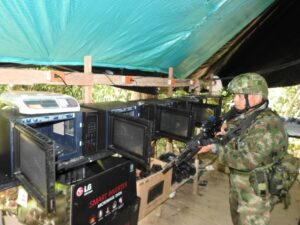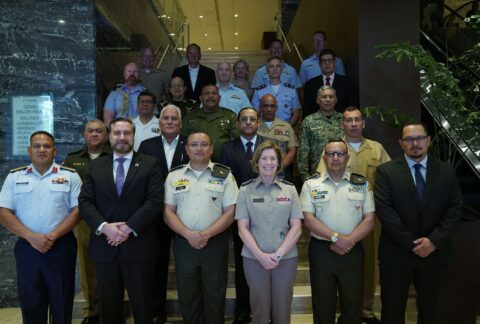The Colombian Army succeeded in further weakening dissident groups of the Revolutionary Armed Forces of Colombia (FARC) by capturing three of their leaders in the eastern Colombian department of Meta in early September. Alias Boliqueso, leader of the Jorge Briceño Structure, alias Anderson and alias Iván, leaders of Structure 39, were captured during search and seizure operations.
That same month, in the department of Santander, Army troops also dealt a blow to the finances of Structure 33 by destroying two cocaine hydrochloride processing laboratories, valued at more than $3 million, The Colombian Military Forces’ General Command said in a statement. The operations were carried out with the support of the Colombian Air Force, the National Police’s Judicial and Criminal Investigation Sectional Units (SIJIN), and the Attorney General’s Office.
“We made three captures, including two [belonging to] Structure 39, among them its second leader Gerardo Antonio Sanguino, alias Anderson, [who] had a 24-year criminal record,” Colombian Army Brigadier General Miller Vladimir Nossa Rojas, commander of the 4th Division, told the press.
Alias Anderson is believed to be responsible for carrying out multiple ambushes on troops and terrorist attacks against security forces and for kidnapping and extorting businessmen and cattle ranchers, the Colombian Army indicated.

“Alias Iván, a foreign national, was in charge of finances and terrorist acts […], planting explosive devices, and extortion,” Brig. Gen. Nossa said. Alias Iván entered Colombia in 2019, to join the extinct 10th Front armed group, where he carried out criminal activities against the public forces in Arauquita and Saravena, Arauca department, the Army reported. Alias Iván was the financial chief of Structure 39 and led the extortions of farmers and cattle ranchers with high incomes.
Authorities captured alias Boliqueso during another operation. “He was currently the head of support networks [of the Jorge Briceño Structure]. This individual was active in the municipalities of Meta, Uribe, Lejanías and Vista Hermosa; he had been with the organization for 15 years and was a man trusted by the commission’s leader, Aurelio Buendía,” Brig. Gen. Nossa said.
In the municipality of Tibú, Norte de Santander department, the Army destroyed cocaine hydrochloride processing laboratories. In the facilities, authorities found and destroyed more than 939 liters of liquid chemical precursors and 160 kilograms of solid chemical precursors, lime, and caustic soda, among others used to process the alkaloid.
“Troops of Task Force Vulcano and the Command Against Transnational Threats managed to destroy two gigantic laboratories that housed more than 3,000 kg of cocaine hydrochloride,” Colombian Army Colonel Diego Jaramillo Muñoz, commander of Task Force Vulcano, told the press. “According to military intelligence and after several days of monitoring, the soldiers arrived at the village of La Colombiana, where we achieved this strong result against those who are believed to be part of the organized armed group of the FARC dissidence Structure 33.”
Throughout 2022 until September 28, the Army reported the capture of 803 people linked to FARC dissident groups. Authorities also seized 79,923 kg of cocaine hydrochloride, 24,011 kg of coca base paste, 90,601 kg of marijuana, 1,655 laboratories, 883 seedbeds, 325,236 kg of solid chemical precursors, more than 2 million liters of liquid chemical precursors, and more than 2,500 weapons, according to data from the National Army Press Office.









